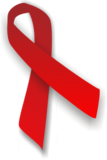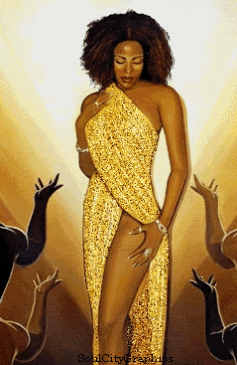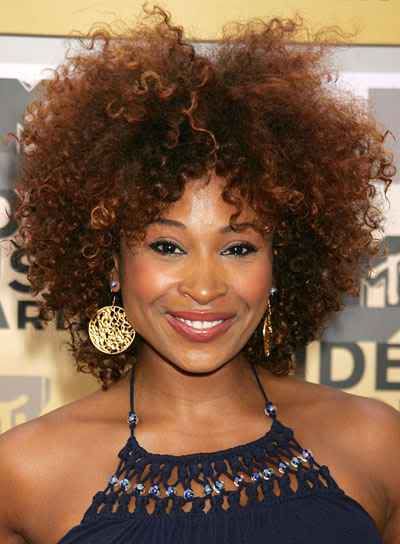February 25, 2010
I am a Christian
When I say "I am a Christian"
I'm not shouting "I am saved."
I'm whispering "I get lost"
That is why I chose this way.
When I say "I am a Christian"
I don't speak of this with pride.
I'm confessing that I stumble
And need someone to be my guide.
When I say "I am a Christian"
I'm not trying to be strong.
I'm professing that I am weak
And pray for strength to carry on.
When I say "I am a Christian"
I'm not bragging of success.
I'm admitting I have failed
And cannot ever pay the debt.
When I say "I am a Christian"
I'm not claiming to be perfect.
My flaws are too visible
But God believes I'm worth it.
When I say "I am a Christian"
I still feel the sting of pain.
I have my share of heartaches
Which is why I seek HIS name.
When I say "I am a Christian"
I do not wish to judge.
I have no authority
I only know I'm loved.
by Maya Angelou

I'm not shouting "I am saved."
I'm whispering "I get lost"
That is why I chose this way.
When I say "I am a Christian"
I don't speak of this with pride.
I'm confessing that I stumble
And need someone to be my guide.
When I say "I am a Christian"
I'm not trying to be strong.
I'm professing that I am weak
And pray for strength to carry on.
When I say "I am a Christian"
I'm not bragging of success.
I'm admitting I have failed
And cannot ever pay the debt.
When I say "I am a Christian"
I'm not claiming to be perfect.
My flaws are too visible
But God believes I'm worth it.
When I say "I am a Christian"
I still feel the sting of pain.
I have my share of heartaches
Which is why I seek HIS name.
When I say "I am a Christian"
I do not wish to judge.
I have no authority
I only know I'm loved.
by Maya Angelou

African Americans and HIV/AIDS

The HIV/AIDS epidemic in African American communities is a continuing public health crisis for the United States. At the end of 2006 there were an estimated 1.1 million people living with HIV infection, of which almost half (46%) were black/African American. While blacks represent approximately 12 percent of the U.S. population, they continue to account for a higher proportion of cases at all stages of HIV/AIDS—from infection with HIV to death with AIDS—compared with members of other races and ethnicities. The reasons are not directly related to race or ethnicity, but rather some of the barriers faced by many African Americans. These barriers can include poverty (being poor), and stigma (negative attitudes, beliefs, and actions directed at people living with HIV/AIDS or people who do things that might put them at risk for HIV).
As the impact of the epidemic among African Americans has grown, the Centers for Disease Control and Prevention (CDC), state and local public health agencies, and African American communities have stepped up efforts to address the crisis. One of their efforts includes National Black HIV/AIDS Awareness Day. For 10 years, a group of national organizations, in partnership with CDC, have created and implemented activities focused on motivating African Americans to get tested and learn their HIV status, as well as educating community members about the importance of HIV prevention, early detection, and treatment.
This year’s theme focuses on encouraging African American communities to actively think about HIV/AIDS, its impact on the community, and prevention efforts and strategies available. A wealth of HIV prevention information is available, and African Americans need to receive that information to better protect their health and the health of their loved ones. A collaborative response by many is necessary to decrease the burden of HIV/AIDS in the African American community. Therefore, CDC and African American leaders from business, civil rights organizations, entertainment, government, and the media are speaking out and taking action. When people affected and infected by HIV take collective action against the spread of this disease, our power to control this disease increases.
Together, we can prevent HIV/AIDS, one voice, one experience, one community at a time. What Can You Do?
•Learn About HIV/AIDS. Educate yourself, friends, and family about HIV/AIDS and what you can do to protect yourself.
•Get tested for HIV. To find a testing site near you, call 1-800-CDC-INFO, visit hivtest.org , or, on your cell phone, text your zip code to Know IT (566948).
•Speak Out against stigma, homophobia, racism, and other forms of discrimination associated with HIV/AIDS.
•Donate time and money to HIV/AIDS organizations that work within African American communities.
True Colors For Women of Color
Women of color have often felt ignored by cosmetics companies. Many ethnic women have had trouble finding foundation and makeup colors that are flattering . African-American women usually have sensitive, oily skin that scars easily. Products that are powdery can look ashy and chalky on darker complexions, and pink pigmented products are unflattering to ethnic skintones.
In the beginning, there was Fashion Fair. Founded in 1973 and aimed at African-American and Carribean women, it offered darker colors, not available at the time. It is still around, and can be purchased at a handful of stores across the country. The line seems a bit old-fashioned to me. There is a skincare line that includes bleaching cream and oil reduction products. Color choices are conservative, and I could not find a product with a sunscreen (we should all wear sunscreen) . Still, it is a no-frills line for dark- skinned women. www.fashionfair.com.
In 1994, fashion model Iman, tired of mixing her own colors and formulas, started her own cosmetics line. I-man is geared to all women of color, and it really succeeds in its goal. It is a line with multi-cultural appeal, and no unnecessary products. She has pared it down to a wonderful range of essentials. The products are creamy, and blend well. I like the pressed powder, which leaves a dewy finish. The skincare line is excellent. I recommend Hydrator SPF 15, and Drench, a rich but light moisturizer. Both are $35.00.
Iman has two websites. www.i-man.com is her personal site with info about the products, and her makeup philosophy. It projects the image of a funky urban drama queen, fitting for the wife of David Bowie. Her line can be purchased at www.imanbeauty.com, a very user-friendly site with descriptions of all the items, and easy checkout. I-man is also available at most JC Penneys stores.
For women who want a large line with many flattering color options, I suggest Nars, and MAC. Nars has dark lipsticks in lovely shades of brown and burgundy. Nars is available at www.neimanmarcus.com and at major department stores. At the MAC shop I visited recently, there was a lovely dark-skinned makeup artist, with her brushes in a large tool belt around her waist. She was willing to take the time to assist customers with their choices, and she knew the line well. MAC uses women of color as models. Go to www.maccosmetics.com for store locations.
I am a multi-racial woman. I am not Asian, but with my very yellow undertones, I find that Shiseido works well for me. I have always been drawn to the dramatic palettes and unique products. I have been wearing makeup since I was 13, and when I want color, Shiseido has never let me down. Find Shiseido products at most major department stores.
Women of color now have more options, as companies realize the potential of a powerful consumer base. Ideally, cosmetics companies should consider the ethnic market. Most women are willing to pay for quality products and good service, especially if the products are tailored to her needs. A woman of color wants to feel welcome at the cosmetics counter. Consultants should be aware of her needs, and the company should feature ethnic faces in their advertising.
by Cheryl Duffey
In the beginning, there was Fashion Fair. Founded in 1973 and aimed at African-American and Carribean women, it offered darker colors, not available at the time. It is still around, and can be purchased at a handful of stores across the country. The line seems a bit old-fashioned to me. There is a skincare line that includes bleaching cream and oil reduction products. Color choices are conservative, and I could not find a product with a sunscreen (we should all wear sunscreen) . Still, it is a no-frills line for dark- skinned women. www.fashionfair.com.
In 1994, fashion model Iman, tired of mixing her own colors and formulas, started her own cosmetics line. I-man is geared to all women of color, and it really succeeds in its goal. It is a line with multi-cultural appeal, and no unnecessary products. She has pared it down to a wonderful range of essentials. The products are creamy, and blend well. I like the pressed powder, which leaves a dewy finish. The skincare line is excellent. I recommend Hydrator SPF 15, and Drench, a rich but light moisturizer. Both are $35.00.
Iman has two websites. www.i-man.com is her personal site with info about the products, and her makeup philosophy. It projects the image of a funky urban drama queen, fitting for the wife of David Bowie. Her line can be purchased at www.imanbeauty.com, a very user-friendly site with descriptions of all the items, and easy checkout. I-man is also available at most JC Penneys stores.
For women who want a large line with many flattering color options, I suggest Nars, and MAC. Nars has dark lipsticks in lovely shades of brown and burgundy. Nars is available at www.neimanmarcus.com and at major department stores. At the MAC shop I visited recently, there was a lovely dark-skinned makeup artist, with her brushes in a large tool belt around her waist. She was willing to take the time to assist customers with their choices, and she knew the line well. MAC uses women of color as models. Go to www.maccosmetics.com for store locations.
I am a multi-racial woman. I am not Asian, but with my very yellow undertones, I find that Shiseido works well for me. I have always been drawn to the dramatic palettes and unique products. I have been wearing makeup since I was 13, and when I want color, Shiseido has never let me down. Find Shiseido products at most major department stores.
Women of color now have more options, as companies realize the potential of a powerful consumer base. Ideally, cosmetics companies should consider the ethnic market. Most women are willing to pay for quality products and good service, especially if the products are tailored to her needs. A woman of color wants to feel welcome at the cosmetics counter. Consultants should be aware of her needs, and the company should feature ethnic faces in their advertising.
by Cheryl Duffey
Black Women Mental-Health Needs Unmet

Sixty percent of African American women suffer from depression, but few seek professional help because of the communal stigma and because there are few providers specializing in African American issues. Now, new mental health initiatives are reaching out
INGLEWOOD, Calif. (WOMENSENEWS)--"There's a fear of putting our business in the street . . . of somehow revealing too much," said Latonya Slack, executive director of the California Black Women's Health Project, an Inglewood, Calif., community-health organization. "Black women can perceive going to a therapist as something we don't do," she added.
Lorraine Cole, president of the Black Women's Health Imperative, the Washington, D.C.-based parent organization of the California BlackWomen's Health Project, agrees. "There's a deep-seated feeling that going to seek professional help is a sign of weakness," she said.
In California, African American women have the shortest life expectancy among women of all racial and ethnic groups in the state. They also have the highest mortality rate for heart disease and stroke and the highest prevalence of high blood pressure and obesity. Recent research indicates that mental health plays a role in these health disparities in California--and across the nation. But while many black women know and discuss the threats to their physical health, when it comes to mental health, there's silence and inaction.
Slack and Cole, both African American women, are leading efforts to address the physical, mental and spiritual health needs of black women. Both have commissioned studies that revealed many black women are struggling with mental health issues but are not seeking professional help. They and others see improving black women's access to mental health treatment as a crucial element to addressing the serious, but often manageable, illnesses plaguing their physical health.
By Shauna Curphey
The Differences Between Ethnic and Straight Hair

Curly/ Coily hair is delicate
Contrary to popular belief, hair that is curly/coily is much more delicate than hair that is straight. Straight hair has as much as twice the amount of cuticles than curly hair. The cuticle is important. On healthy hair the cuticle lies flat. When they lie flat you hair shines. Heat styling, using chemicals, shampoo, and improper combing or brushing all can contribute to making the cuticle rough. Which will in turn make the hair tangle and hard to manage.
Curly/ Coily Hair is Drier
The individual hair follicles produce natural oils (sebum) to keep the hairs lubricated. The curlier your hair, the harder it is for the sebum to get all the way down to the ends. Also there are less individual hair on a curly haired person than on a person with straight hair. That means that there are less sebaceous glands to produce oil.
Curly/Coily Hair is Flatter and finer
If you were to look at a cross section of straight hair under a microscope, you would see it is round like the rings of a tree. Wavy hair is oval which gives it its gentle bends and waves. Curly hair is flat. Coily hair is the flattest of all and the most delicate.
Subscribe to:
Comments (Atom)



